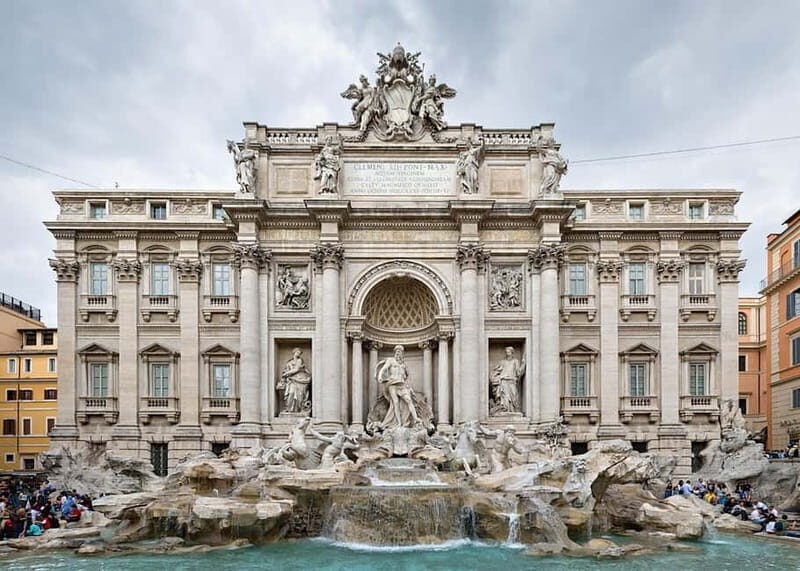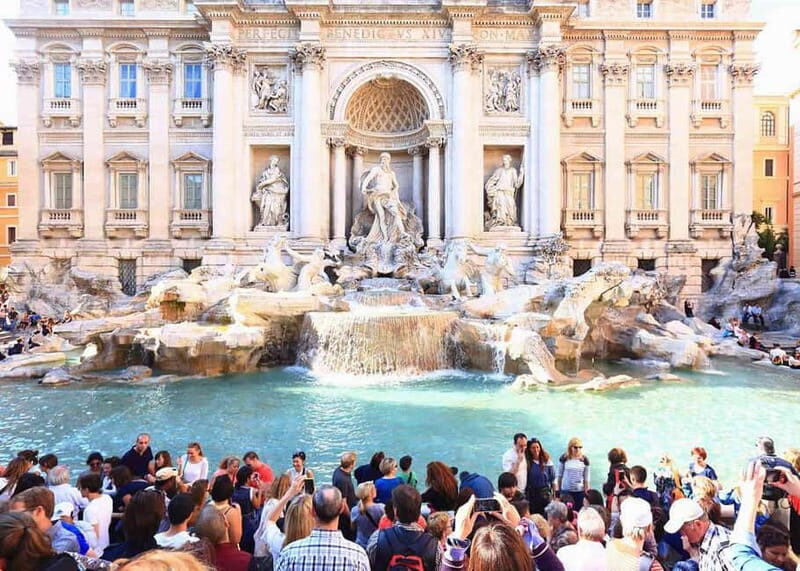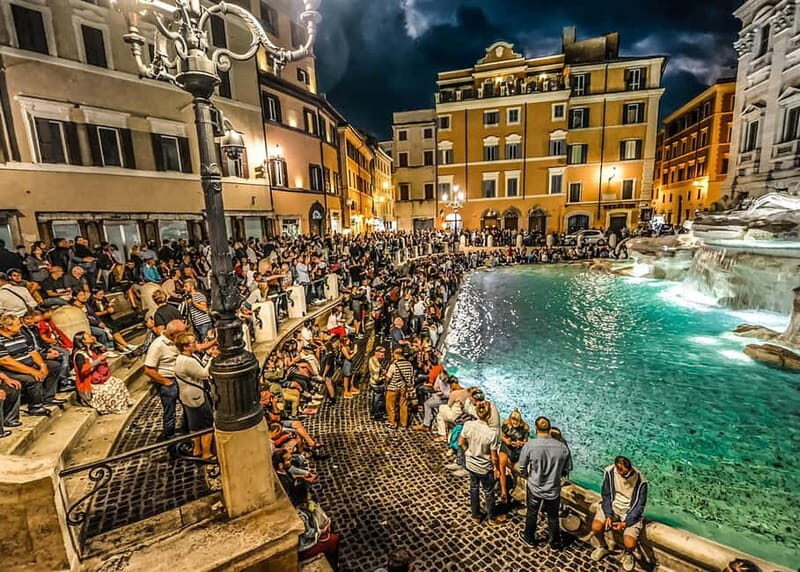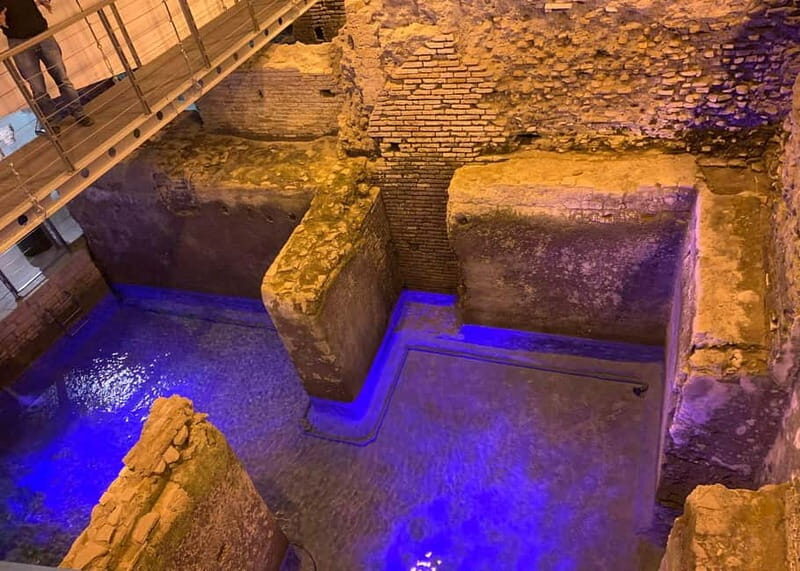Exploring Rome often means marveling at its famous monuments, but few experiences go beyond just the surface. This guided tour offers an unusual and fascinating look beneath the Trevi Fountain, revealing stories and structures that most visitors will never see on their own. Ideal for those with a curiosity for history, architecture, or archaeology, it’s a chance to appreciate one of Rome’s most iconic landmarks in a completely new light.
What we love about this experience is how it combines the grandeur of the famous Trevi Fountain with the thrill of discovering hidden Roman ruins and an ancient aqueduct. The fact that the tour includes access to recently opened underground excavations is particularly special. However, it’s worth noting that this is a shared tour with some walking involved, and it’s not suitable for travelers with mobility issues. Overall, it’s a perfect pick for travelers eager to see Rome through a more authentic and less touristy lens, especially if they enjoy archaeology and history.
Key Points
- Underground Discovery: Explore newly opened archaeological spaces beneath the Trevi Fountain, including Roman ruins and aqueducts.
- Historical Depth: See a 2,000-year-old aqueduct still in use today and the remains of ancient Roman residences.
- Expert Guides: Learn the story behind the fountain’s design, mythological figures, and its connection to Roman engineering.
- Authentic Insight: Gain perspectives on how the Trevi Fountain is intertwined with Rome’s ancient past.
- Weather-Resilient: The tour proceeds in all weather conditions; dress comfortably.
- Limited Accessibility: Not suitable for wheelchair users, so plan accordingly.
The Experience: More Than Just the Fountain

We’ll start with the basics: the Trevi Fountain itself, one of Rome’s most photographed landmarks. Our guide greets us in front of the Church of Saints Vincent and Anastasius, marked by a bright yellow label, setting the scene for what’s to come. As we approach the fountain, your guide will share the story of its creation—designed in the 18th century by Nicola Salvi—and reveal the myths behind the mythological figures like Neptune, Tritons, and the allegorical representations of abundance.
But the real magic begins as the group descends about 30 feet (roughly 9 meters) underground. The newly accessible archaeological site is a treasure trove of Roman history, with layers of centuries-old structures visible for the first time to the public. This underground space isn’t just a showpiece; it’s an active part of the fountain’s water supply, fed by a 2,000-year-old aqueduct that still functions today. Seeing this ancient Roman engineering marvel in action offers a tangible connection to the past, giving us insight into how Romans managed water—an essential resource—so efficiently.
You can also read our reviews of more tours and experiences in Rome.
The Ancient Aqueduct and Its Significance
The aqueduct feeding the Trevi Fountain is a standout feature of the tour. Roman aqueducts are engineering marvels, and this one has endured for over two millennia. You’ll get a clear view of how the Romans routed water from distant springs into the heart of the city, providing fountains, baths, and private homes with water. What makes this particular aqueduct special is that it’s still operational, still supplying water to the Trevi Fountain. It’s a reminder of Roman ingenuity that has lasted through centuries, still quietly working beneath the busy streets of modern Rome.
Authentic reviews praise the underground visit for its uniqueness. One reviewer noted, “Seeing the aqueduct still in use and understanding how Roman engineering functions today was a real highlight.” Such insights make this tour more than just sightseeing—it’s a lesson in ingenuity and resilience.
Roman Ruins and Imperial Residences
Next, your guide will lead you through the remains of an imperial Domus, a lavish Roman residence that once housed Rome’s elite. Walking through the ancient rooms, you’ll get a sense of daily life for the powerful families of antiquity. This site isn’t just about ruins; it’s about story-telling—how the ancient Romans lived, entertained, and built their legacy.
The stratified layers of the archaeological site reveal centuries of occupation and transformation, adding depth to your understanding of Rome’s evolving landscape. As one reviewer remarked, “Walking through the remains of an imperial residence gave me a sense of what it was like to live as Roman aristocrats. It was surprisingly intimate and detailed.”
The Design and Mythology of the Fountain
Back on the surface, your guide will recount the creation of the Trevi Fountain and the symbolic meanings behind its sculptures. Neptune, the god of the sea, dominates at the center, flanked by Tritons—each of which has stories to tell. The intricate carvings and statues are not just decorative—they tell stories of abundance, power, and myth.
Understanding the design enhances the experience. It turns a famous tourist photo into a meaningful encounter. One visitor said, “I now see the fountain differently—it’s not just beautiful, but also full of symbolism rooted in Roman mythology.”
More Great Tours NearbyPracticalities and Value

This tour lasts about 4 hours, making it a manageable yet enriching experience. Included in the price is your guided tour and entrance to the underground excavations, which is a significant value considering the rarity of access to such sites. Keep in mind, transportation to the meeting point (the church in front of the Trevi Fountain) is not included, so plan accordingly.
The group size is typically limited, allowing for more personalized interaction, but remember it’s a shared tour, which can be a plus for social travelers or those looking for a lively atmosphere. The tour runs in all weather conditions, so pack your raincoat, sunscreen, or warm clothes based on the forecast.
While the tour is not suitable for wheelchair users, it’s an ideal experience for those who appreciate archaeological sites, history buffs, or travelers wanting an authentic, behind-the-scenes look at Rome’s ancient infrastructure. Several reviewers noted that the underground visit was the highlight of their trip, describing it as “unforgettable” and “a rare peek into Rome’s underground world.”
- The Original Roman Crypts and Catacombs Tour With Transfers
- Tuscany Guided Day Trip From Rome With Lunch & Wine Tasting
- Colosseum Underground and Ancient Rome Small Group – 6 People Max
- Skip-the-Line Vatican, Sistine Chapel & St. Peters | Small Group
- Vatican Museums, Sistine Chapel & St Peter’s Basilica Guided Tour
- Gladiator’S Gate: Special Access Colosseum Tour With Arena Floor
Considerations
The tour operates on a reserve-and-pay-later basis, offering flexibility if travel plans shift unexpectedly. Given the underground component, comfortable shoes are a must—think sturdy walking shoes—since you’ll be walking and descending stairs. It’s also wise to dress warmly in cooler months or carry a hat and sunscreen for the surface portions.
Who Should Book This Tour?

If you’re passionate about archaeology and ancient engineering, this tour offers a unique chance to see how Romans built water systems that still function today. It’s perfect for history enthusiasts wanting more depth than the usual sightseeing. Also, if you enjoy stories and symbolism behind iconic monuments, you’ll find plenty to love here.
However, if mobility is a concern, or if you’re looking for a quick photo stop rather than a detailed exploration, this might not be the best fit. It’s also especially appealing to travelers who prefer small-group, guided experiences over self-guided walks.
Final Thoughts: Is It Worth It?

This tour provides a fascinating blend of art, engineering, and history. We loved how the underground spaces turn the famous Trevi Fountain into a window onto ancient Roman life and technology. The access to the still-functioning aqueduct and the Roman residence ruins offers an authentic, tangible connection to the past that you simply can’t get from a brochure or a quick photo.
The price—when considering the exclusive access and expert guidance—represents good value for a deep dive into Rome’s less-visible but equally impressive layers. It’s especially suited for travelers who crave a more meaningful, less cookie-cutter experience of Rome’s historic sites.
If your goal is to deepen your understanding of Roman engineering, mythology, and urban development, this tour will deliver more than just a pretty picture. It’s a rare opportunity to see a side of Rome that most visitors will never encounter.
FAQ

Do I need to book in advance?
Yes, the tour is best booked ahead, especially since it includes access to special underground sites. You can cancel up to 24 hours in advance for a full refund, providing flexibility in your plans.
Where does the tour start?
The meeting point is in front of the Church of Saints Vincent and Anastasius, marked with a yellow label. Be sure to arrive a few minutes early.
What should I bring?
Bring your passport or ID card, comfortable shoes, and dress appropriately for the weather. Since the underground part is cool and damp, dress warmly or carry a jacket.
Is the tour suitable for children or elderly?
While the tour is not wheelchair accessible, children and active elderly travelers who are comfortable walking and descending stairs should enjoy it. Always consider individual mobility limitations.
Will I see the Trevi Fountain at night?
The tour focuses on the underground and archaeological sites, but it begins near the fountain during daytime hours. The fountain looks beautiful at night, but the underground experience is best experienced during daylight or early evening.
Are there nearby places to eat after the tour?
Yes, the area around the Trevi Fountain has many cafes and trattorias. It’s a perfect spot to relax and reflect on what you’ve seen.
Can I combine this tour with other Rome attractions?
Yes, but be mindful of scheduling. This tour lasts about 4 hours, so plan your day accordingly. It pairs well with other half-day activities in central Rome.
This tour offers a rare and meaningful way to connect with Rome’s ancient past—beyond the usual tourist crush. Whether you’re a history buff or simply curious about how Rome’s water systems shaped its empire, it’s a memorable experience worth considering for your trip.
You can check availability for your dates here:More Tour Reviews in Rome
- Rome: Pasta and Gelato Cooking Class With Local Chef
- Vatican: Inside St. Peters Art, Faith, & Holy Doors
- Rome: Jubilee Basilicas Guided Tour
- Rome: Mamertine Prison, Colosseum Experience, & Audio Guide
- Rome 3 hours Golf Cart Sightseeing tour with gelato/suppli
- Rome: E-bike Tiber River Tour > Hidden Gems & Local Treats
Not for you? Here's more nearby things to do in Rome we have reviewed
- Rome: Pasta and Gelato Cooking Class With Local Chef
- Vatican: Inside St. Peters Art, Faith, & Holy Doors
- Rome: Jubilee Basilicas Guided Tour
- Rome: Mamertine Prison, Colosseum Experience, & Audio Guide
- Rome 3 hours Golf Cart Sightseeing tour with gelato/suppli
- Rome: E-bike Tiber River Tour > Hidden Gems & Local Treats
- Rome: Hop-on Hop-off Sightseeing Bus Tour with Audioguide
- Rome: City Walking Tour with German Guide
- Rome: Guided Colosseum Arena & Forum Experience
- Rome: Roman House of the Celio Hill Ticket & App Audioguide
- EBike Roman Castles : Papal Palace & Lake (Train from Rome)
- Rome: Vespa Tour & Professional Photoshoot
